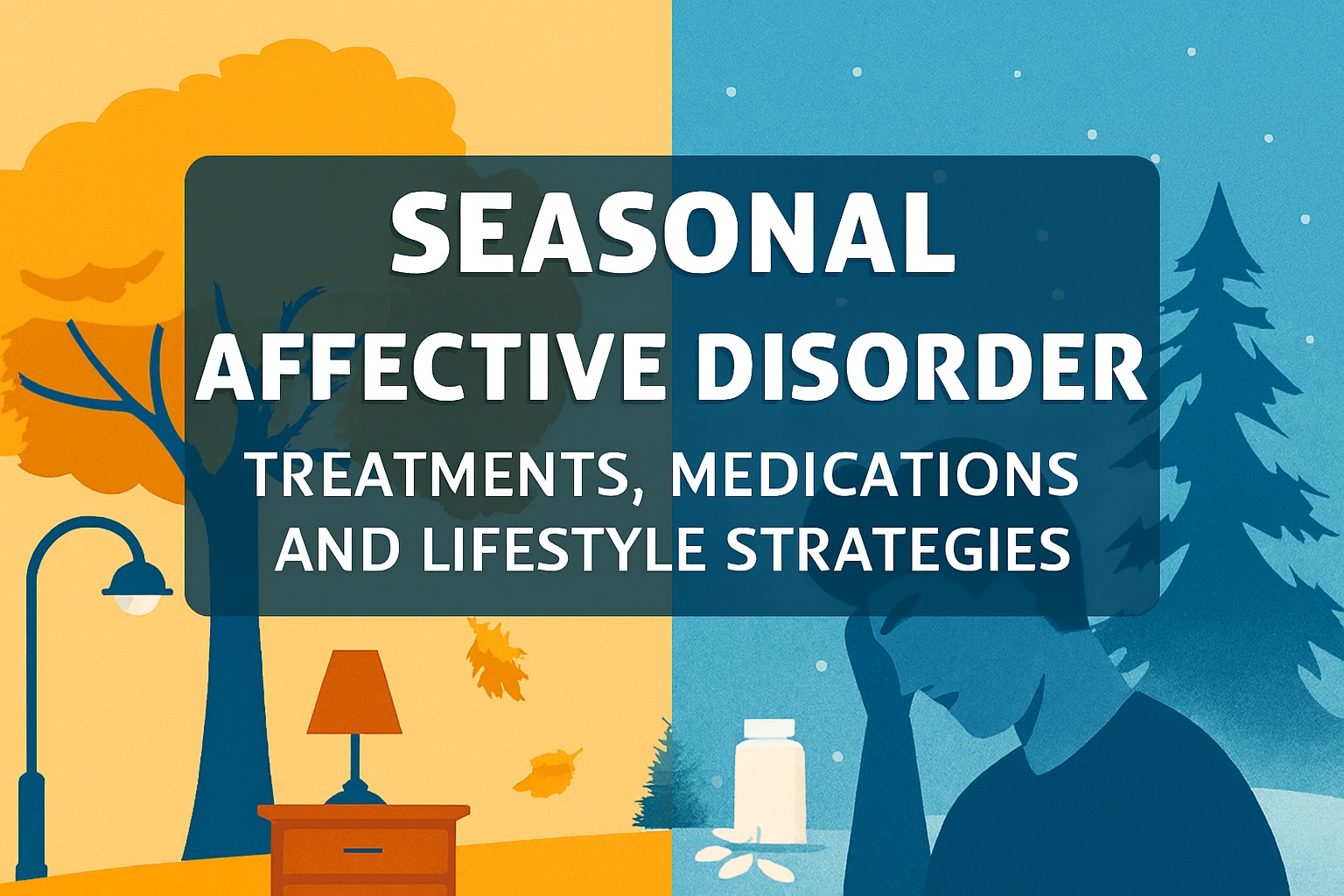As daylight hours shrink during fall and winter, millions of people experience a noticeable shift in mood, energy, and sleep patterns. This phenomenon, known as Seasonal Affective Disorder (SAD), is a subtype of major depressive disorder that follows a seasonal pattern—typically emerging in late autumn and peaking in the darkest months of winter.
SAD is more than just “winter blues.” It’s a clinically recognized condition that may require changes in medication dosages, lifestyle adjustments, and targeted therapies to manage symptoms effectively. This post explores the science behind SAD, its impact on mental health, and evidence-based treatments ranging from prescription medications to holistic strategies.
What Is Seasonal Affective Disorder?
Seasonal Affective Disorder is a mood disorder characterized by recurrent depressive episodes that occur at specific times of the year, most commonly during fall and winter. According to the National Institute of Mental Health (NIMH), SAD affects approximately 5% of adults in the U.S., with symptoms lasting about 40% of the year.1
Key Symptoms of SAD
- Persistent low mood
- Fatigue and low energy
- Oversleeping (hypersomnia)
- Increased appetite, especially for carbohydrates
- Difficulty concentrating
- Feelings of hopelessness or worthlessness
The Role of Daylight and Circadian Rhythms
SAD is closely linked to reduced exposure to natural light, which disrupts the body’s circadian rhythm—the internal clock that regulates sleep, mood, and hormone production. Shorter days and longer nights can lead to:
- Decreased serotonin levels, a neurotransmitter that influences mood
- Increased melatonin production, which promotes sleepiness
- Disruption of sleep-wake cycles, leading to fatigue and cognitive impairment
A 2023 study published in Psychiatry Research found that individuals with SAD had significantly lower serotonin transporter binding in the brain during winter months, suggesting a biological basis for seasonal mood changes.2
Do Antidepressant Dosages Need Adjustment in Winter?
Emerging research suggests that antidepressant dosages may need to be adjusted seasonally for individuals with SAD. A 2022 meta-analysis in The Journal of Affective Disorders found that patients with SAD responded better to higher doses of SSRIs during winter compared to summer, likely due to greater serotonin depletion.3
Psychiatrists may recommend:
- Increasing SSRI dosage during peak SAD months
- Switching to extended-release formulations like bupropion XL
- Combining pharmacotherapy with light therapy
However, dosage changes should always be guided by a healthcare provider based on individual response and side effect profile.
Medications for SAD: Prescription and OTC Options
Below is a comparison of key medications used to treat SAD, including prescription antidepressants and over-the-counter supplements.
Table: Medications for SAD
| Medication | Type | Pros | Cons | Common Side Effects |
| Fluoxetine (Prozac) | SSRI | Well-studied; effective for SAD | May take weeks to work; sexual side effects | Nausea, insomnia, sexual dysfunction |
| Sertraline (Zoloft) | SSRI | Fewer drug interactions; good for anxiety | May cause weight gain | Drowsiness, dry mouth, dizziness |
| Bupropion XL (Wellbutrin XL) | NDRI | Energizing; weight-neutral; FDA-approved for SAD | May increase anxiety; seizure risk | Headache, insomnia, dry mouth |
| Melatonin | OTC supplement | Regulates sleep; low cost | Not effective for mood symptoms alone | Drowsiness, vivid dreams |
| St. John’s Wort | Herbal remedy | Natural option; some antidepressant effects | Interacts with many drugs; inconsistent potency | Photosensitivity, GI upset |
| Light Therapy | Non-drug option | Fast-acting; minimal side effects | Requires daily use; not portable | Eye strain, headache (rare) |
Sources: Mayo Clinic, NIH
Better Treatment, Lower Cost – No Catch.
Find safer, more effective medications with fewer side effects – often for less money. It’s fast, free, and personalized. Learn More →
Non-Medical and Homeopathic Strategies
While medications can be effective, many individuals benefit from non-pharmacological interventions that support mood and circadian health.
1. Exercise
Regular physical activity boosts endorphins and serotonin. A 2021 study in Frontiers in Psychiatry found that aerobic exercise significantly reduced depressive symptoms in SAD patients.6
Recommendation: Aim for 30 minutes of moderate exercise (e.g., brisk walking, cycling) at least 5 days a week.
2. Nature Exposure
Spending time outdoors—even on cloudy days—can improve mood. Natural light exposure helps regulate melatonin and serotonin production.
Tip: Take a morning walk to maximize light exposure and reset your circadian rhythm.
3. Diet
Certain nutrients play a role in mood regulation:
- Vitamin D: Deficiency is common in winter and linked to depression. Supplementation may help.7
- Omega-3 fatty acids: Found in fish oil, these support brain health and may reduce depressive symptoms.8
4. Sleep Hygiene
Maintaining a consistent sleep schedule is crucial. Avoid screens before bed, limit caffeine, and create a dark, quiet sleep environment.
Bonus Tip: Use blackout curtains and consider a sunrise alarm clock to simulate natural light.
When to Seek Professional Help
If symptoms of SAD interfere with daily functioning, it’s important to consult a mental health professional. Treatment may involve:
- Psychotherapy (e.g., CBT-SAD): Cognitive Behavioral Therapy tailored for seasonal depression
- Medication management
- Light therapy supervision
Early intervention can prevent worsening symptoms and improve quality of life.
References
- National Institute of Mental Health – SAD Overview
- Psychiatry Research – Serotonin Transporter Study
- Journal of Affective Disorders – SSRI Dosage Meta-Analysis
- Mayo Clinic – SAD Treatments
- NIH – SAD and Light Therapy
- Frontiers in Psychiatry – Exercise and SAD
- NIH – Vitamin D and Depression
- NIH – Omega-3s and Mood


